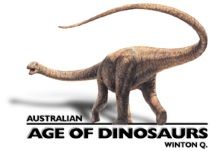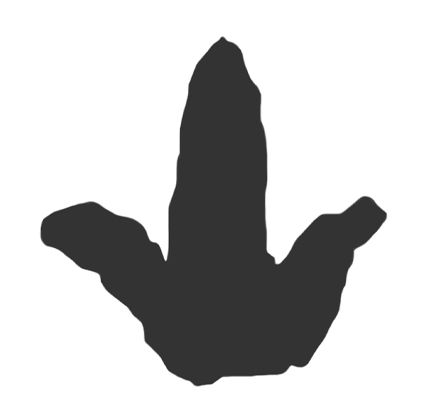cf. Anchisauripus
Pronunciation
Ank-ee-sore-ih-puss
Meaning
“Foot of Anchisaurus [a basal sauropodomorph]”
Period
Jurassic
Ichnospecies in Australia
Indeterminate.
Origin and other locations
Originally described from North America; other reports from Europe, Asia.
Australian use and location
Southeast Queensland, Walloon Coal Measures.
Description
Although fairly large theropod footprints have been known from southeast Queensland since the 1930s, the presence of smaller-bodied theropods in the same faunas was only established recently. In 2020, Anthony Romilio and colleagues identified two tracks from collieries (underground coal mines) as cf. Anchisauripus (cf. stands for confere, Latin for ‘compare with’). These come from Balgowan Colliery near Oakey, and Oakleigh No. 3 Colliery near Rosewood. The footprint from Oakleigh No. 3 Colliery had earlier been illustrated by Tony Thulborn, who thought it was made by an ornithopod.
The ichnogenus Anchisauripus was first named by Richard Swann Lull in 1904. Lull’s choice of name was, however, unfortunate: he named this ichnogenus after the ‘primitive’ sauropodomorph dinosaur Anchisaurus, but it is now universally agreed that footprints assigned to Anchisauripus pertain to theropods. Footprints similar to Lull’s Anchisauripus are now known from several other continents (including Europe and Asia). However, differentiating Anchisauripus tracks from another theropod ichnogenus named Grallator has proven difficult; some workers consider them to be one and the same.
Regardless of the validity of the name Anchisauripus, the tracks tentatively assigned to this ichnogenus from southeast Queensland demonstrate that small-bodied theropods lived in Australia during the Jurassic. Other tracks from the same time and place represent larger-bodied theropods (Kayentapus) and a stegosaur (cf. Garbina). However, the only dinosaur body fossil from these rocks is the sauropod Rhoetosaurus brownei.

